Daniel & Geo Fuchs have documented the architectural legacy left by the former GDR’s Ministry for State Security (Stasi), the main security and intelligence organization of the German Democratic Republic (East Germany).
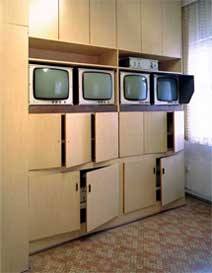
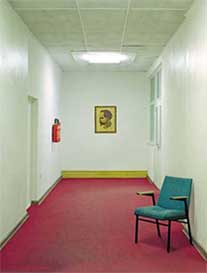
The Stasi had nearly 90,000 official workers and 170,000 unofficial collaborators in a country with a population of 16 million. The organization was dissolved 18 years later, yet some of these sites have remained practically as they were.
The photographs show the rooms that the Stasi used to interrogate prisoners; prison cells for political prisoners; the offices of the minister for State Security; bunkers; and the files stored by the Stasi Documentation Office in Berlin – endless stacks of protocols generated by control and espionage, division and corruption – witnesses of the total control of a regime that clung to power for over 40 years.
The images are on show at La Virreina in Barcelona until July 1. Images.
 Meanwhile Berlin is still under the spell of ostalgia/e. Part of it is genuine and part is there to make tourists happy. I mean, how else could you explain the online (still have to check out if it is mirrored by a brick and mortar existence) apparition of Ostel? The DDR design guesthouse, complete with the Honecker´s Punch cocktail, original GDR furniture, a Stasi suite and a city tour in a Trabant, etc.
Meanwhile Berlin is still under the spell of ostalgia/e. Part of it is genuine and part is there to make tourists happy. I mean, how else could you explain the online (still have to check out if it is mirrored by a brick and mortar existence) apparition of Ostel? The DDR design guesthouse, complete with the Honecker´s Punch cocktail, original GDR furniture, a Stasi suite and a city tour in a Trabant, etc.
What i did check out though is Dictatorship and Everyday Life in the GDR. The exhibition, currently running at the German Historical Museum, looks at life in East Germany before the fall of the Berlin Wall. There are posters in english in the city and leaflets in both german and english but the labels of the pieces are in german and most of the time only the title is translated. Still, i spent a much more interesting time there than at the Disneyworld-esque and tacky DDR museum which opened by the Spree last year (not that everyone would agree with me on that.)
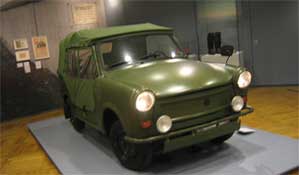
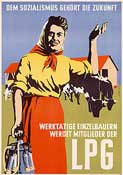
Since the Socialist Unity Party rule could not prove its legitimacy through election, it had to derive its leading role on history. Starting in 1952, the East German “Museum for German History” had the task of conveying an interpretation of history based on Marxism-Leninism. When the communist state’s 40 year-old history came to an end in 1989, the museum’s collections were inherited by the new all-German Historical Museum. After the fall of the Wall, many East Germans donated items from their everyday lives, saving them from being thrown away. Hence the many party badges, toilet paper holders, knitted shopping bags, placards, buckets and radio sets and other consumer goods on show. Some of them have that retro and slightly fun charm, others are to die for, such as the Penti camera. There’s a nice collection of objects from another exhibition about “DDR, Life and Style” online.
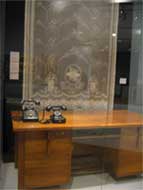
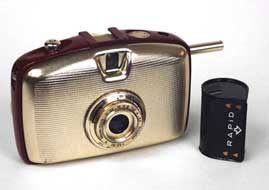 Desk from the study of Wilhelm Piecks and Penti camera
Desk from the study of Wilhelm Piecks and Penti camera
Also on show are some of the objects discovered during restoration work at the former Communist Council of State Building, which served as Eric Honecker‘s office when he was GDR head of state. Restoration workers came across stacks of household items, including bathroom tiles, and ornate soap holders hidden away in office cupboards kept there, it is said, in case they might have to face short supply. Following the example of GDR workers maybe, they preserved car parts and anything else of potential value in their garages and sheds – some to be used as exchange items in lean periods.
The exhibition shows a nice mix of artefacts: a portrait of Honecker made of mosaic and ivory, boots from an expedition in Antarctic, mail art, self-made covers for cassettes of underground music, flags that claim that “Good work is worthwhile”, there are strange moments like when you catch yourself looking with interest at a jar of margarine exhibited behind a glass as a precious artefact.
The show hopes to appeal to teenagers who were born after the Fall of the Wall. There were several school groups with guides and teachers in the exhibition rooms and, man!, did they looked bored.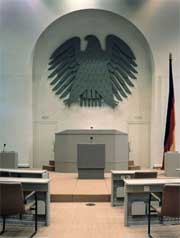
Until July 29th 2007 at the German Historical Museum.
Another exhibition, Räume der Politik [Rooms of Politics], featuring photographs by Oliver Heissner and Lars Peter as well as drawings by Matthias Beckmann is about to open in the Bundestag. It looks at questions such as: In what types of rooms does politics occur? How does the political actors behave on the manyfold political stages and how does the viewers behave in front of these stages? And what kind of traces do they leave behind?
